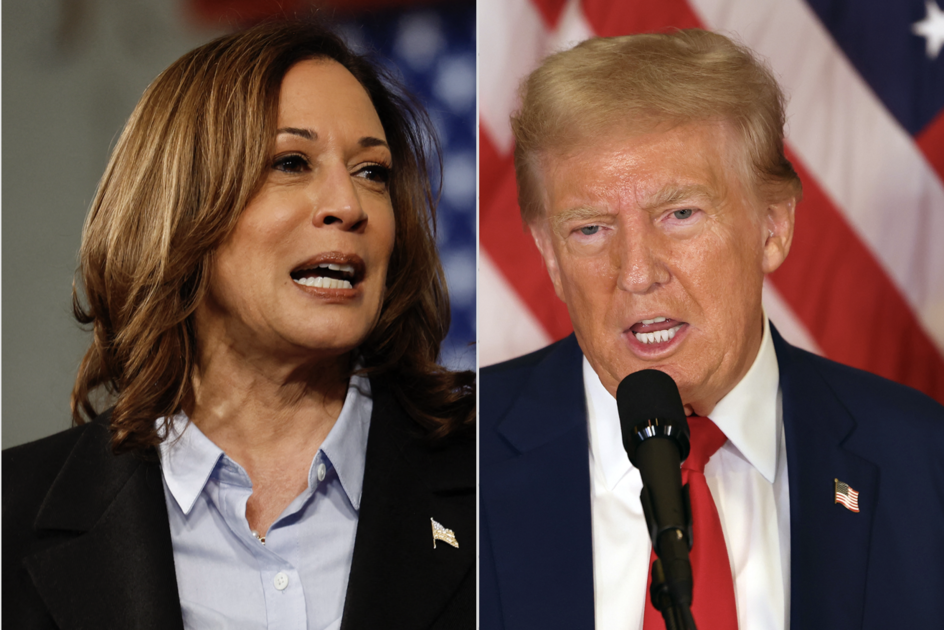
Harris says violent crime is down. Trump says it’s up. Here’s a fact check.

On the campaign trail, former President Donald Trump has repeatedly claimed that violent crime has “skyrocketed” since 2020. Vice President Kamala Harris has claimed that violent crime has declined to a “near 50-year low.”
Both candidates are citing different federal statistics that measure violent crime; Trump cites a Justice Department survey, while Harris cites FBI data on crimes reported by police departments.
Crime researchers tell CBS News that while both are valuable metrics, the FBI data Harris cites is more reliable, and she is correct that it suggests violent crime is at a near 50-year low. However, both Trump and Harris overlook the significant impact of COVID-19 when comparing current crime rates to 2020, researchers say.
post on social media, Trump said, “Compared to 2020, violent crime is up nearly 40 percent.” That figure aligns with estimates from the latest National Crime Victimization Survey, known as the NCVS, by the Department of Justice, which found that the rate of violent crime offenses — defined as rape, robbery and aggravated assault, but not including homicide — was about 37% higher in 2023 than in 2020.
Crime researchers say the survey findings are valuable because they can capture some instances of crimes that often go unreported to police. But the survey’s violent crime estimates exclude murders and are limited by a margin of error, according to Jeff Asher, a crime data analyst and co-founder of AH Datalytics.
“The 2023 NCVS showed violent crime likely fell slightly from 2022 levels and was not statistically different from where it was in 2019. Comparing one favorable year of NCVS to a less favorable year is simply cherry-picking the data source without considering the overall trend and without acknowledging a potentially large margin of error,” Asher said.
What research shows about violent crime under Biden-Harris
Experts more commonly refer to the FBI’s Uniform Crime Report, which tracks crimes reported to police by participating law enforcement agencies. According to that FBI, the rate of violent crimes — defined as rape, robbery, aggravated assault and homicide — was around 6% lower in 2023 than in 2020.
Harris’ claim that violent crime dropped to a “near 50-year low” is accurate, according to analysis by Asher. The 2023 violent crime rate is just slightly above the rates reported in 2014 and 2021, which are the lowest reported since 1970.
“It’s an accurate statement based on the FBI data, though I prefer to say ‘reported violent crime is at or near a 50-year low’ for precise accuracy given that not every violent crime is reported to the police,” Asher said.
The FBI’s figures are estimates, and participation by police agencies is voluntary, but the FBI said more than 16,000 law enforcement agencies (out of about 18,000 nationwide) provided data for 2023.
Other research corroborates these trends. For example, the Major Cities Chiefs Association reported a 9.1% decrease in murders from 2020 to 2023 in 70 large U.S. cities.
AH Datalytics found total violent crime reports were lower in 2023 compared to 2020 and that they have continued to decline in 2024.
What research shows about violent crime under Trump
FBI data shows that violent crime rates fell annually during Trump’s first three years in office, but spiked in 2020. Researchers continue to study the causes of the spike, but have pointed to a number of potential factors including the economic and mental strain of the pandemic, an increase in gun sales, and protests following the murder of George Floyd in police custody. However, they remain divided on how the protests may have contributed to the increase.
Amid widespread lockdowns, some opportunity-based crimes like robbery dropped while crimes like homicides increased, according to Jillian Turanovic, an associate professor of sociology at the University of Colorado Boulder. She cautioned that using 2020 as a baseline for crime comparisons is misleading.
“It’s crucial to consider longer time horizons, especially when analyzing data from periods of significant societal disruption like the COVID-19 pandemic,” said Turanovic.
Data shows violent crime rates generally declining since 1990s
Despite the discrepancies between crime surveys and reported crime rates in recent years, Turanovic says both the NCVS and FBI data show similar long-term trends.
“Both tell us that the nation’s violent crime rate is substantially lower than it was in the 1990s, that violent crime rates, based on most recent data, are largely on par with where they have been over the past decade, and that there is no evidence that violent crime rates are ‘soaring,'” Turnovic said.
More
Source: cbsnews.com